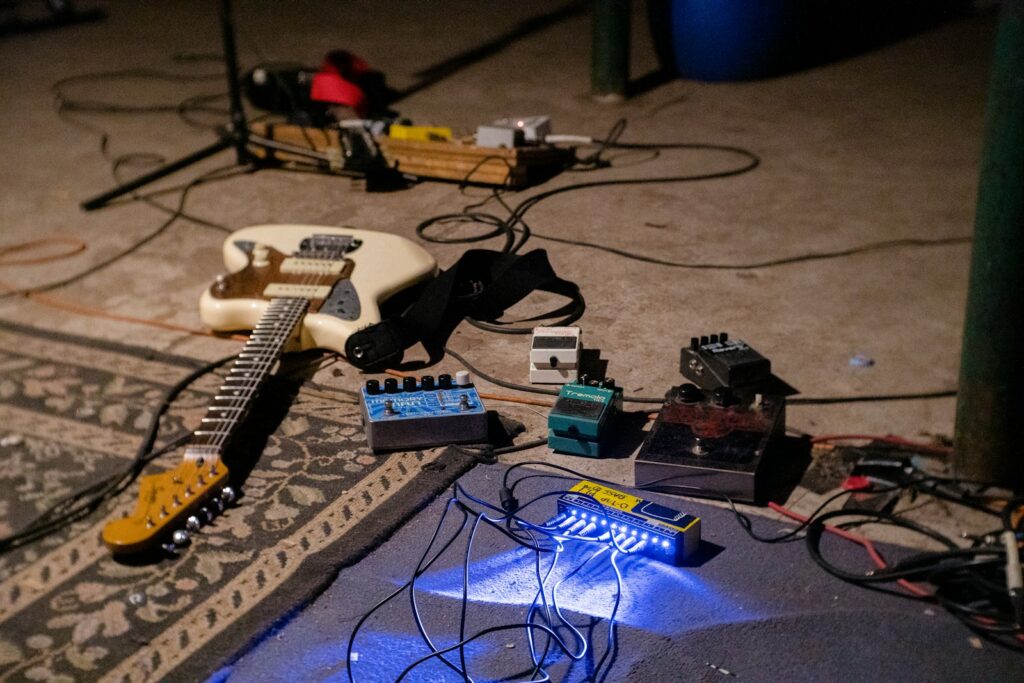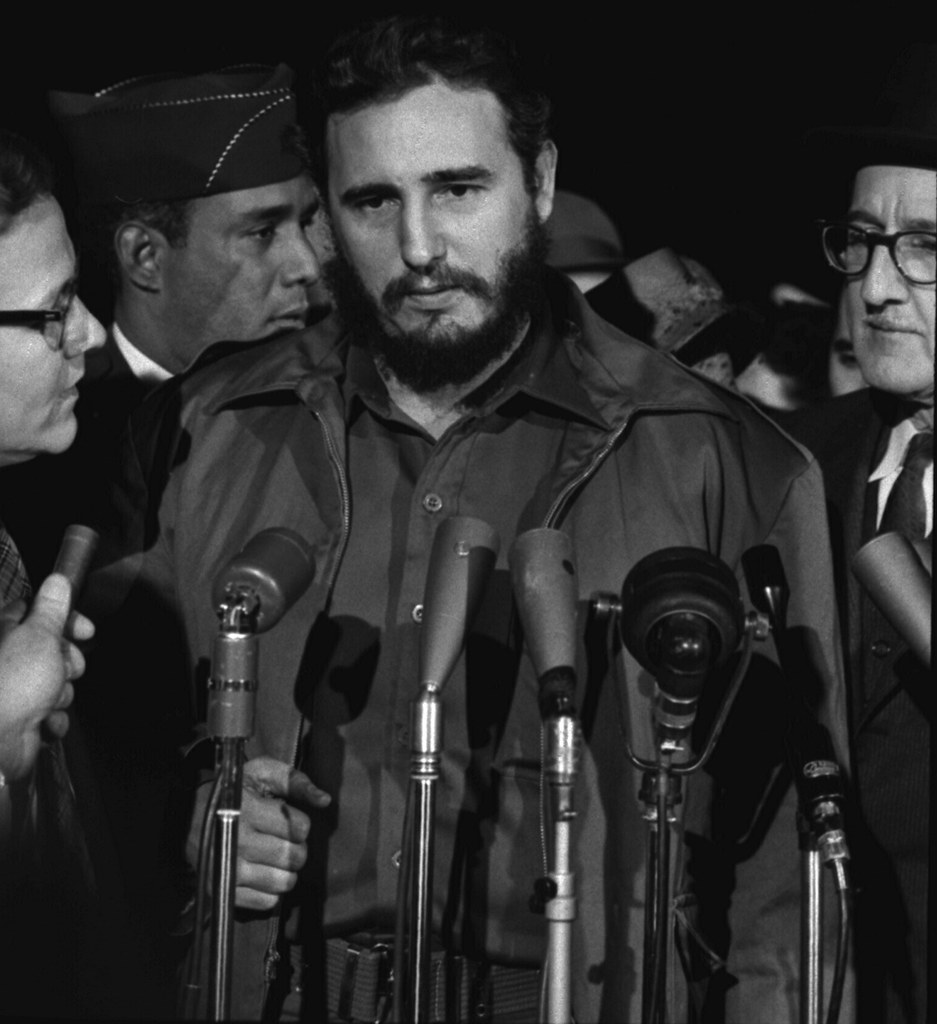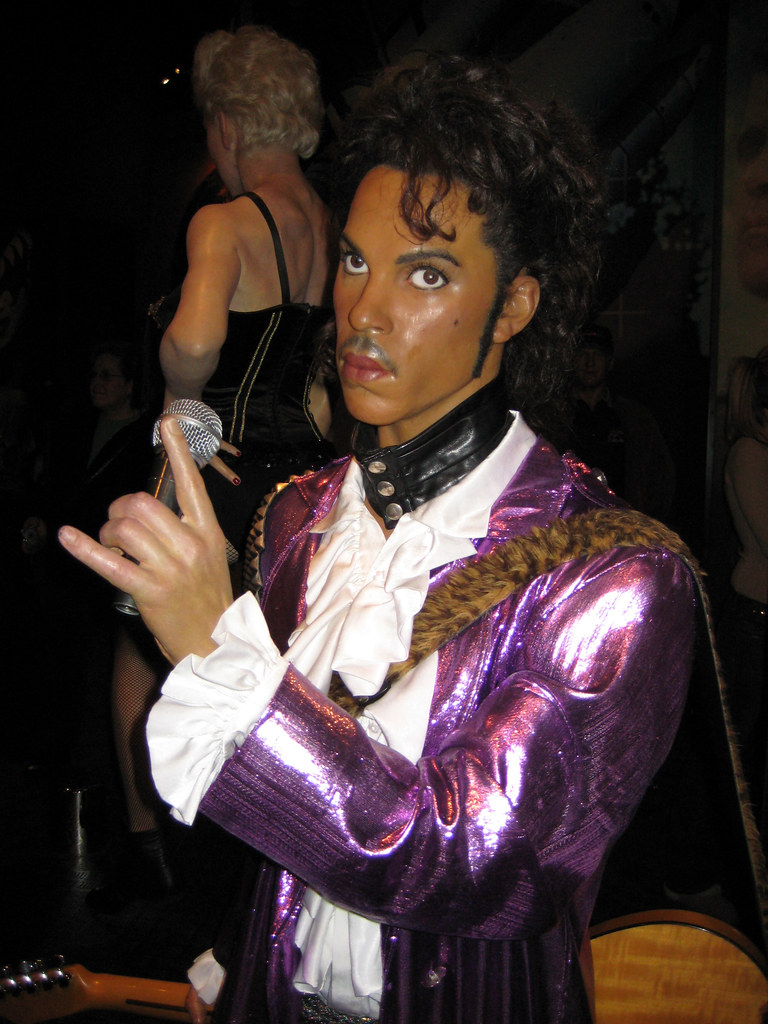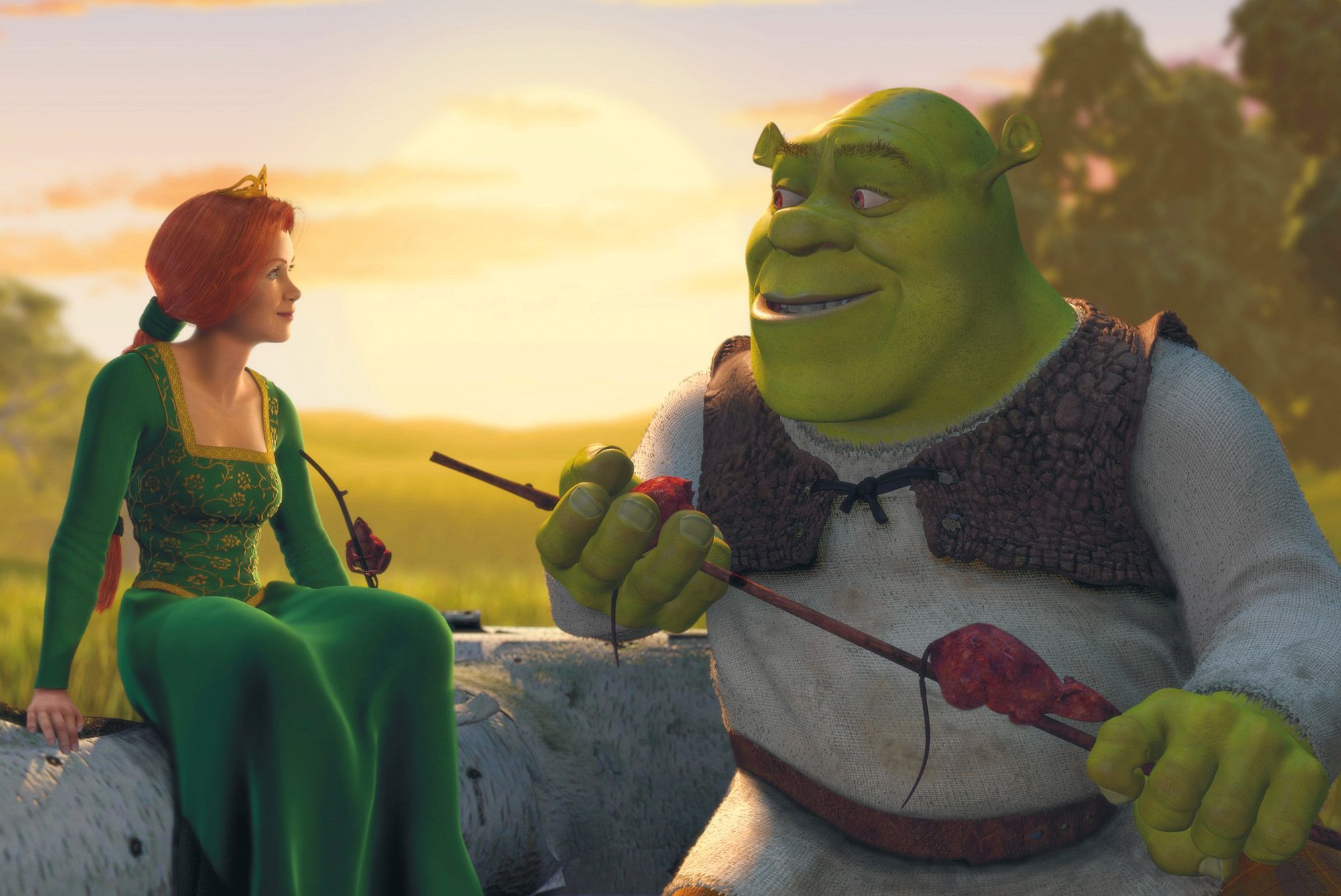
In the vast and ever-evolving landscape of independent music, few bands have carved out a space as uniquely profound and influential as Low. Hailing from Duluth, Minnesota, this trio, and later duo, redefined the boundaries of rock music with their signature blend of slow tempos, minimalist arrangements, and deeply affecting vocal harmonies. Their journey, spanning three decades, is a testament to unwavering artistic integrity, resilience, and a singular vision that resonated with critics and cultivated an intensely devoted fanbase across the globe. Their story, however, culminated in a poignant final chapter with the passing of co-founder Mimi Parker in 2022, marking the end of an era for a band that truly was, as Alan Sparhawk beautifully put it, “Mimi.”
From their humble beginnings in the early 1990s to their eventual status as indie rock stalwarts, Low consistently challenged conventions, creating a sound that was at once delicate and powerful, intimate and expansive. They navigated an industry often driven by trends with a steadfast commitment to their artistic principles, leaving an indelible mark on countless musicians and listeners alike. This in-depth look into their history provides a clear, comprehensive understanding of the band’s significant contributions and the milestones that defined their remarkable path.
Join us as we embark on a journey through the initial chapters of Low’s compelling narrative, delving into the very genesis of their sound, their early critical reception, and the key relationships and experiences that forged their unique artistic identity. We’ll explore how their distinctive approach to music, often referred to as ‘slowcore,’ was conceived and evolved, setting the stage for a legacy that continues to inspire and enchant.

1. **Band Formation and Early Career (1993-1996)**The story of Low began to unfold in early 1993, when Alan Sparhawk, a guitarist and vocalist, and Mimi Parker, his wife who would become the band’s drummer and co-vocalist, joined forces in Duluth, Minnesota. Initially, they were a trio, with John Nichols recruited to play bass. The genesis of their distinctive sound, in fact, stemmed from a playful, almost ironic idea conceived by Sparhawk and Nichols. Sparhawk had been playing in a band called Zen Identity, and during practices with Nichols, they began improvising with “very modest, quiet themes.”
This led to a humorous musing: what if they were to perform such quiet music in front of Duluth crowds, particularly during a time when the dominant rock sound was the loud, aggressive grunge of “post-punk”? This “joke became a serious thought,” leading Sparhawk to leave Zen Identity and formalize the new project with Nichols and Parker. Mimi’s contribution to their nascent sound was foundational, as she played a “very modest drum kit composed of a single snare drum, single cymbal, and a single floor tom,” using “brushes almost exclusively, rather than drum sticks,” which contributed significantly to the band’s minimalist aesthetic.
Drawing influences from diverse acts such as Hüsker Dü, R.E.M., Sex Pistols, The Clash, and Siouxsie and the Banshees, Low began shaping their unique voice. Their first two shows took place in 1993 at Duluth’s RecyclaBell. The band’s official debut album, *I Could Live in Hope*, was released in 1994 on Vernon Yard, an imprint of Virgin Records, featuring Nichols on bass. However, a significant lineup change occurred when Zak Sally replaced Nichols for the recording of their subsequent album.
*Long Division* followed in 1995, and its similar successor, 1996’s *The Curtain Hits the Cast*, solidified their reputation as “critical darlings.” Both *I Could Live in Hope* and *Long Division* were notably “produced and recorded by Kramer,” an early collaborator who helped define their sound. Extensive touring during this period was instrumental in cultivating a deeply “devoted fan base,” and the single “Over the Ocean,” extracted from *The Curtain Hits the Cast*, even found considerable success on college radio, showcasing their growing reach and appeal.
Read more about: Unveiling the Enduring Luxury: Janet Jackson’s Illustrious Career and Cultural Impact

2. **Defining Musical Style: Slowcore and Evolution**Low’s music was immediately recognizable, characterized by a deliberate approach to composition. Their style was distinguished by “slow tempos and minimalist arrangements,” creating “atmospheric songs marked by long, unsettling silences.” This deliberate use of space and quietude was a hallmark, contributing to a sound that was both subtle and immensely impactful. Jason Akeny of AllMusic described their sound as “delicate, austere, and hypnotic,” further noting that the “trio’s formative music rarely rose above a whisper, divining its dramatic tension in the unsettling open spaces created by the absence of sound.”
Early on, critics attempted to categorize this novel sound, often referring to it as “slowcore,” and frequently drawing comparisons to bands like Bedhead, who explored similar sonic territories in the early 1990s. However, the band members themselves ultimately “disapproved of the term.” Alan Sparhawk expressed his disdain candidly, stating, “‘What’s the cheesiest? Slow-core. I hate that word.'” He suggested that a more fitting descriptor would involve the word “minimal,” highlighting the core essence of their musical philosophy.
Perhaps the most distinctive and enduring element of Low’s sound was the exquisite interplay of Parker and Sparhawk’s vocal harmonies. Critic Denise Sullivan beautifully captured this essence, writing that their “shared vocals are ‘as chilling as anything Gram [Parsons] and Emmylou [Harris] ever conspired on—though that’s not to say it’s country-tinged, just straight from the heart.'” This emotional depth and raw honesty in their vocal delivery became a cornerstone of their identity, capable of conveying profound sentiment with understated grace.
As their career progressed, Low’s musical style demonstrated a remarkable willingness to evolve and experiment. While always retaining their fundamental minimalist approach, they gradually began to “incorporate elements of electronica and glitch music on later releases.” This diversification, particularly noticeable from *Secret Name* onwards, added new textures and dimensions to their sound, reflecting their tenure with Kranky and their exposure to the Midwest’s burgeoning post-rock scene, ensuring their music remained fresh and challenging over the years.

3. **Live Performances and Unique Stage Presence**Low was renowned not only for their distinctive recordings but also for their captivating and often unconventional live performances. A central feature of their stage presence for three decades was the setup of Mimi Parker’s drum kit. Positioned “stage center between her husband, guitarist and vocalist Alan Sparhawk, and the band’s bassist,” Parker’s minimalist drum kit underscored the band’s sonic philosophy even visually. Their shows were often an immersive experience, with rock club audiences sometimes choosing to watch the band while “seated on the floor,” a testament to the intimate atmosphere they cultivated.
In their early career, Low frequently encountered “unsympathetic and inattentive audiences in bars and clubs.” Their response to this challenge was characteristic of their artistic defiance: they would “buck rock protocol and turn their volume down.” The delicate and dynamic range of their early material meant that many of their songs were “very quiet,” making them susceptible to the distracting background noise and chatter common in such venues. A memorable instance occurred in 1996 at the South by Southwest festival, where their performance was unfortunately “overpowered when a Scandinavian hardcore band was booked downstairs.”
Over time, however, a shift in their live sound became apparent. The *Trust* album, released in 2002, notably “marked a turning point,” with Low’s music developing a “more emphatic sound” in their performances. Despite their often serious and introspective recordings, Low also demonstrated a surprising “sense of humor not necessarily found on their recordings.” This manifested in their live shows through drastically reinterpreted cover versions of famous songs by bands like Joy Division and The Smiths. A notable example was a tour in early 2004, which “featured a cover of OutKast’s hit song ‘Hey Ya!,'” much to the delight of their fans.
Their willingness to engage in performance art and unexpected theatricality was also part of their live appeal. At a Los Angeles gig on Halloween 1998, the band took the stage as a “Misfits tribute act, complete with corpse paint and black clothing.” However, not all live moments were lighthearted; at the 2008 End of the Road Festival in Dorset, England, Sparhawk abruptly ended the band’s performance by dramatically “ripping the strings and lead out of his guitar, throwing it to the ground and then hurling it into the crowd before exiting the stage,” having earlier informed the audience that it had been a “crappy day.”
One of their most talked-about performances occurred at the 2013 Rock the Garden concert in Minneapolis. This consisted of a “slowed and lengthened version of their drone rock song ‘Do You Know How to Waltz?'” which lasted a staggering “half an hour.” The performance concluded with Alan Sparhawk declaring, “‘Drone, not drones,'” a reference to a local anti-drone sticker. This particular show was “broadcast live on radio station KCMP” and subsequently “resulted in mass audience confusion and divisive online discussion,” perfectly encapsulating Low’s commitment to challenging expectations and provoking thought, right up to their final performance at the Water Is Life Festival in Duluth on September 4, 2022.
Read more about: From Record-Breakers to Shocking Upsets: 13 Must-Know Moments and Winners from the 2025 Emmy Awards!

4. **Evolution to Kranky and Critical Acclaim (1997-2002)**Following their foundational releases on Vernon Yard, Low embarked on a new chapter, transitioning to the independent label Kranky by the time their 1999 album, *Secret Name*, was released. This move to Kranky proved to be a pivotal moment, allowing the band to continue refining their unique sound while gaining broader critical recognition within the indie music scene. In the period leading up to and during their Kranky tenure, Low also released “several singles and EPs,” demonstrating their consistent creative output and eagerness to explore different musical avenues.
One notable collaboration during this era was in 1999 when Low “joined forces with Dirty Three to record an In The Fishtank session for Konkurrent records.” This collaborative effort was highly lauded, with Allmusic describing the six-song disc as “some of the best material either unit has produced.” Of particular note from this session was the “disc’s lengthy cover of Neil Young’s ‘Down by the River’,” showcasing their interpretive prowess and willingness to reimagine well-known tracks through their distinctive minimalist lens.
The early 2000s saw a prolific period for the band on Kranky. “2001 saw the release of *Things We Lost in the Fire*,” an album that continued to expand their sonic palette. The following year, “2002 saw the release of the band’s final full-length on Kranky, *Trust*.” These albums cemented Low’s status as a formidable and innovative force in independent music, attracting significant critical attention and further expanding their dedicated following.
What set these Kranky releases apart, in part, was the involvement of “superstar producers.” Both *Secret Name* and *Things We Lost in the Fire* benefited from the expertise of “recording engineer Steve Albini, who proved sympathetic to capturing the band’s strengths.” Albini’s renowned ability to capture raw, authentic sound was an ideal match for Low’s aesthetic. For *Trust*, the band worked with Tom Herbers, alongside Duluth engineer Eric Swanson, and the album was “mixed by Tchad Blake at Peter Gabriel’s Real World Studios,” underscoring their commitment to high-quality production and their collaboration with celebrated figures in the recording industry.

5. **Producers and Engineers Who Shaped Their Sound**The sonic identity of Low was meticulously crafted over their career, significantly influenced by the talented producers and engineers with whom they collaborated. These individuals played a crucial role in translating the band’s minimalist vision into compelling recordings. In their formative years, “Kramer produced and recorded” both their debut album, *I Could Live in Hope*, and its follow-up, *Long Division*. His early involvement was instrumental in establishing the band’s initial sound, laying the groundwork for their critically acclaimed career.
As Low transitioned to the Kranky label, they sought out the expertise of other renowned figures. “Secret Name” and “Things We Lost in the Fire” notably featured the work of “recording engineer Steve Albini.” Albini is celebrated for his direct, unembellished approach to recording, which proved to be “sympathetic to capturing the band’s strengths.” His ability to present a band’s sound with clarity and power, without unnecessary embellishment, perfectly complemented Low’s commitment to minimalism and emotional honesty, allowing their core artistry to shine through.
For their 2002 album, *Trust*, Low enlisted a new team of accomplished professionals. The recording was handled by “Tom Herbers along with Duluth engineer Eric Swanson.” This collaborative approach in the studio ensured a rich and nuanced sound. The album then received its final touches from “Tchad Blake, who mixed it at Peter Gabriel’s Real World Studios.” Blake’s mixing prowess, known for its innovative and atmospheric qualities, contributed significantly to the album’s distinctive sonic character, further illustrating Low’s dedication to working with some of the best talents in the industry.
Later in their career, another influential producer joined their ranks. For their 2005 album, *The Great Destroyer*, Low collaborated with “producer Dave Fridmann.” Fridmann is acclaimed for his ability to craft expansive and often psychedelic soundscapes, which helped push Low’s sound further in a rock-oriented direction, as noted by the *Village Voice*. The deliberate choice of these esteemed producers and engineers throughout their discography highlights Low’s commitment to artistic growth and sonic exploration, ensuring that each album offered a fresh yet consistently compelling listening experience.
Read more about: Unseen Architects: 14 Vital Collaborators Every Director Works With to Forge Cinematic Magic
6. **Transition to Sub Pop and “The Great Destroyer” (2003-2005)**The early 2000s marked a period of both personal and professional transitions for Low, culminating in a significant label change. In April 2003, initial reports from Peter S. Scholtes of *City Pages* suggested that bassist Zak Sally had left the band. However, the band quickly issued an update the following month, reassuring fans that they had “all had to work through some personal things recently,” but confirmed, “After sorting it out, the good news is that Zak is remaining in the band.” This period of uncertainty was swiftly resolved, as they successfully toured Europe with Radiohead in July 2003, with Sally notably in tow.
Building on this renewed stability, Low signaled their clear intent to continue making music by taking a pivotal step in their career. Following a “successful tour in early 2004 that vividly demonstrated the band’s commitment to their fans”—a tour during which Parker was “visibly pregnant throughout”—the band made the significant decision to “sign with powerhouse indie label Sub Pop.” This move marked a new era for Low, aligning them with a label known for its influential roster and broad reach within the independent music landscape.
To bridge the gap between their Kranky years and their new venture with Sub Pop, Low ensured that their back catalog was appropriately honored. In 2004, they released a “three-disc rarities compilation on its own Chairkickers label,” providing fans with a comprehensive collection of B-sides and previously unreleased material. This compilation served as a testament to their prolific output and a thoughtful way to “tie up the loose ends of the era” before fully embracing their new direction.
The first major release under the Sub Pop banner was *The Great Destroyer*, which hit shelves in January 2005. This album, recorded with producer Dave Fridmann, represented a notable shift in the band’s sound, leaning “even further in the direction of rock.” It garnered “mostly positive reviews,” with the *Village Voice* describing the record’s sonic evolution as having a “comparatively thunderous verve.” This period, however, also brought personal challenges, as Low had to “cancel the second leg of their extensive tour in support of The Great Destroyer in late spring of 2005.”
Alan Sparhawk candidly “published a statement on the band’s website, addressed directly to fans, detailing his personal problems with depression that resulted in the cancellation of the tour,” demonstrating a remarkable level of honesty and vulnerability. Despite this setback, Sparhawk announced his return to performance in August 2005, embarking on a US tour with former Red House Painters frontman Mark Kozelek. That same October, another lineup change occurred when “Sally announced he was leaving the band,” leading to Matt Livingston stepping in as his replacement.

7. **Later Lineup Changes and Albums (2005-2020)**Following Zak Sally’s departure in late 2005, Low welcomed Matt Livingston to the lineup as their new bassist. Livingston, a talented musician from Duluth’s vibrant musical scene, brought his own unique contributions to the band, notably playing “an antique Navy chaplain’s pump organ in the group” in addition to his bass duties. His tenure saw the release of 2007’s *Drums and Guns*, and he toured with the group before eventually leaving Low in 2008.
Livingston’s departure paved the way for Steve Garrington, who would become Low’s longest-serving bassist. Garrington joined in 2008 and remained with the band for an impressive “12 years and four studio albums.” His steady presence contributed to a period of consistent creative output and critical acclaim. The albums released during his time included *C’mon* (2011), *The Invisible Way* (2013), *Ones and Sixes* (2015), and *Double Negative* (2018), each showcasing the band’s continued evolution while retaining their core identity.
During this prolific period, Alan Sparhawk and Mimi Parker also extended their creative reach through notable collaborations. In 2012, they “provided guest vocals on ‘Lunacy,’ the opening track on Swans’ 2012 album *The Seer*,” demonstrating their respected standing among their musical peers. These collaborations highlighted their versatility and their ability to lend their distinctive vocal harmonies to other acclaimed projects.
By 2020, Low underwent another significant, though less dramatic, lineup shift. With the announcement of their upcoming album, *Hey What*, in June 2021, came the news of Garrington’s departure from the band “a year prior.” This transition transformed Low into “an official duo for the first time in their career,” bringing Sparhawk and Parker’s creative partnership even more directly into the spotlight. To support *Hey What* on tour, it was soon announced that the band had “hired Charlie Parr bassist Liz Draper,” ensuring their live performances remained as compelling as ever, even as their internal structure simplified.

8. **The “Hey What” Era and Mimi Parker’s Final Chapter**Low’s journey continued its profound evolution with the announcement of their acclaimed album *Hey What* in June 2021. Steve Garrington’s departure a year prior solidified their status as an official duo, placing Alan Sparhawk and Mimi Parker’s artistic partnership squarely in the spotlight. Charlie Parr bassist Liz Draper was brought in for tour support, ensuring compelling live performances.
*Hey What*, released on September 10, was universally praised for its innovation. Yet, beneath this artistic triumph, a deeply personal struggle unfolded. Mimi Parker had been diagnosed with ovarian cancer in late 2020, commencing treatment in 2021 and publicly revealing her battle in a January 2022 podcast, introducing a vulnerable dimension to the band’s narrative.
As Mimi’s treatment progressed, Low regrettably canceled several European shows in August 2022, and further dates in September and October, including those with Death Cab for Cutie, due to health concerns. Tragically, Mimi Parker passed away on November 5, 2022, bringing a heartbreaking end to her remarkable life and Low’s indelible 30-year journey. Her passing left an irreplaceable void, but her spirit and artistry continue to resonate profoundly.
9. **Post-Low: Alan Sparhawk’s New Beginnings**In the wake of Mimi Parker’s passing, the future of Low and Alan Sparhawk’s musical trajectory became a focal point for their fanbase. The profound loss of his wife and artistic counterpart unequivocally ended an era. Sparhawk himself confirmed this in June 2023 via Twitter, stating, “Low is and was Mimi. It was amazing. I’m grateful,” honoring Mimi’s central, irreplaceable role and the band’s disbandment.
However, the creative impulse that fueled Low did not diminish. Sparhawk channeled his energies into a new project named Damien, formed in late 2021, even before Parker’s death. This new band introduced a fresh collaborative dynamic, notably featuring his son, Cyrus, on bass guitar, alongside songwriter Marc Gartman on vocals and Owen Mahon on drums.
Damien’s debut album, *The Boy Who Drew Cats*, released in May 2023, offered a glimpse into Sparhawk’s evolving soundscape. Reflecting on this transition, Sparhawk candidly shared, “I’m learning not to be surprised by anything. There is a weird process going on and I have to allow myself the possibility that I have no idea what I’m going to be by the end of this.” This highlights an artist navigating grief and new creative horizons with profound honesty.

10. **Low’s Broad Cultural Footprint: Media and Tributes**Low’s distinctive sound eventually permeated various facets of popular culture, establishing a quiet but undeniable cultural footprint. A memorable instance was their hymn-like rendition of “The Little Drummer Boy,” famously featured in a Gap television advertisement, introducing their unique, glacial tempo to a wide audience. Their albums steadily gained traction on sales charts, initially in Europe and later in the United States, affirming their growing artistic recognition beyond the indie underground.
Their reach extended to film and television, with a remix of “Halflight” in *The Mothman Prophecies* (2002) soundtrack and their network television debut performing “California” on *Last Call with Carson Daly* in 2005. Digitally, a video for “Hatchet (Optimimi version)” was preloaded onto the Microsoft Zune in 2007. Their music also graced Nick Jr.’s *Yo Gabba Gabba!* and the UK show *Skins*, which featured multiple tracks, leading to surges in download sales and a clear declaration from the show’s music supervisor of being “huge fans of Low.”
Their cinematic presence continued with “Monkey” in the 2008 film *KillShot* and tracks in Jonathan Caouette’s 2003 documentary *Tarnation*, including “Laser Beam,” which also appeared in the TV series *Misfits*. Low themselves became the subject of the 2008 documentary *Low: You May Need a Murderer*, solidifying their status as a band worthy of in-depth exploration across various media.

11. **Enduring Influence: Collaborations and Covers**Low’s profound impact extended beyond their own recordings, manifesting in the admiration and direct engagement from other renowned artists. A powerful testament to their revered status arrived in 2010 when the legendary Robert Plant, of Led Zeppelin fame, recorded two of Low’s songs, “Monkey” and “Silver Rider,” from *The Great Destroyer*. These reinterpretations appeared on his critically acclaimed album *Band of Joy*, introducing Low’s songwriting to an entirely new audience. Plant eloquently praised *The Great Destroyer*, noting its universal appeal.
Further solidifying their respected standing, Low was personally chosen by Jeff Mangum of the iconic Neutral Milk Hotel to perform at the All Tomorrow’s Parties festival in March 2012 in Minehead, England. Such an invitation from a revered figure like Mangum spoke volumes about Low’s artistic integrity and their enduring influence on fellow musicians.
Even in their later career, Low’s music continued to find resonance in contemporary media. Their song “Dancing and Blood,” from the critically acclaimed *Double Negative*, was selected as the end credit music for the upcoming 2025 A24 film *Warfare*. This placement, along with its feature in the Netflix series *13 Reasons Why*, demonstrates that Low’s rich discography remains a potent source for filmmakers and television producers seeking music that evokes profound emotion.
Read more about: From Child Star to Industry Powerhouse: JoJo’s Unstoppable Evolution in Music and Beyond

12. **Beyond the Main Band: The Chairkickers’ Union and Local Scene**Beyond their primary work as Low, Alan Sparhawk and Mimi Parker were deeply committed to nurturing their local music community in Duluth, Minnesota. This was vividly demonstrated through their establishment of the record label Chairkickers’ Union, serving as a platform for Low’s own material and a vital outlet for other talented musicians from the region, including artists like Rivulets and Haley Bonar.
Alan Sparhawk, a pivotal figure in Duluth’s flourishing independent music environment, actively operated a recording studio housed within a deconsecrated church. This unique setting provided exceptional acoustics and lush reverb, contributing significantly to Low’s characteristic sound and underscored their hands-on approach to production.
The majority of musicians on the Chairkickers’ Union label hailed from Duluth, fostering a tightly knit artistic ecosystem. This enterprise was an extension of Low’s artistic philosophy, emphasizing authenticity, collaboration, and a dedication to cultivating local talent, leaving an indelible mark on their hometown’s independent music landscape.
13. **Sparhawk’s Diverse Musical Ventures**The members of Low, particularly Alan Sparhawk, consistently ventured into diverse musical projects, showcasing remarkable versatility. Former bassist Zak Sally, for instance, broadened his horizons by touring with the acclaimed instrumental trio Dirty Three, demonstrating his adaptability. These side endeavors provided crucial outlets for individual artistic expression.
Sparhawk himself dedicated significant time and energy to his project Black Eyed Snakes, a blues-rock revival band. Performing under the pseudonym “Chicken-Bone George,” he fully embraced a raw, energetic style, even sharing songs like “Lordy” between this project and Low. Another notable venture was Retribution Gospel Choir (RGC), which also featured Matt Livingston, later Low’s bassist. This project saw a reciprocal creative exchange, with RGC covering Low songs and Low covering RGC tracks such as “Hatchet” and “Breaker” on *Drums and Guns*.
Sparhawk’s solo work further highlighted his wide-ranging interests. His debut solo album, *Solo Guitar* (2006), offered an intimate, stripped-down experience. He even contributed “Be Nice to People with Lice” to a children’s compilation. Additionally, Sparhawk and Sally collaborated on synth-centric New Wave songs as The Hospital People, and performed energetic covers by bands like The Stooges as The Tooth Fairies, collectively underscoring their restless and expansive artistic spirits.

14. **Later Collaborations and Continued Solo Work**Even as Low neared its final chapter, Alan Sparhawk’s collaborative and solo efforts continued to flourish, reflecting his unwavering commitment to musical exploration. In April 2012, Low engaged in a unique partnership with artist Peter Liversidge for a combined performance at the Royal Festival Hall in London, a successful collaboration they reprised a year later at the Barbican Centre. These artistic ventures transcended conventional musical boundaries, integrating visual art into their compelling sonic landscape.
A particularly poignant and enduring collaboration for Sparhawk commenced in 2011 with Duluth violinist and vocalist Gaelynn Lea, forming the band The Murder of Crows. This duo crafted a distinctive sound, performing Lea’s originals, instrumentals, and covers through intricate looping pedals and pared-down arrangements. Their collective creativity culminated in their first album, *Imperfecta* (2012), showcasing a beautiful synergy between their talents and a shared minimalist vision.
Sparhawk also continued his prolific solo career with two more albums announced: *White Roses, My God* (2024), and *Alan Sparhawk With Trampled by Turtles* (2025). He also dedicates his talents to tribute projects, performing in the Neil Young tribute act Tired Eyes and the Derecho Rhythm Section. These diverse roles highlight his deep appreciation for various musical influences and his consistent pursuit of new artistic expressions.
Read more about: Decoding Common’s Journey: Actionable Insights from a Hip-Hop Icon’s Multifaceted Career

15. **Recognitions and the Full Discography**Throughout their celebrated career, Low garnered numerous accolades, including a star on the iconic outside mural of the Minneapolis nightclub First Avenue. This prestigious symbol, reserved for performers who graced sold-out shows and profoundly impacted the local artistic landscape, firmly established Low as a true cultural institution. Journalist Steve Marsh noted a star “might be the most prestigious public honor an artist can receive in Minneapolis,” reflecting deep respect for their excellence and role in shaping the independent music scene.
Beyond these public honors, Low’s artistic legacy is comprehensively documented through their extensive discography, a rich tapestry woven over three decades. Their body of work includes eleven studio albums, from their debut *I Could Live in Hope* to their final, poignant *Hey What*, each a milestone in their sonic evolution. These albums consistently achieved recognition, appearing on sales charts particularly in Europe and later in the United States, attesting to their growing global appeal and critical acclaim.
Their discography is further enriched by a substantial collection of EPs, including the early *Low* and the beloved *Christmas* EP, alongside a multitude of singles showcasing their continuous creative output. Live albums, miscellaneous recordings, and comprehensive compilations such as *A Lifetime of Temporary Relief* offer fans deeper insights into their creative process and unreleased material. This exhaustive catalog stands as a testament to their unwavering artistic integrity, continuous evolution, and the enduring power of their minimalist, yet deeply moving, music.
Read more about: Quincy Jones, the Master Orchestrator Whose Boundless Influence Reshaped Global Music and Entertainment, Dies at 91
As we reflect on the incredible journey of Low, a band that gifted us three decades of profound, emotionally resonant music, it’s clear their impact transcends mere notes and melodies. From their quiet beginnings to their poignant final album, and through the diverse solo and collaborative paths of its members, Low carved out a space in the indie rock firmament that is truly unique. Mimi Parker and Alan Sparhawk, through their unwavering artistic vision and deeply personal connection, created a legacy that continues to inspire, challenge, and comfort. Their story is a powerful reminder that sometimes, the quietest voices resonate the loudest, leaving an echo that will long reverberate in the hearts of listeners and the annals of music history.







